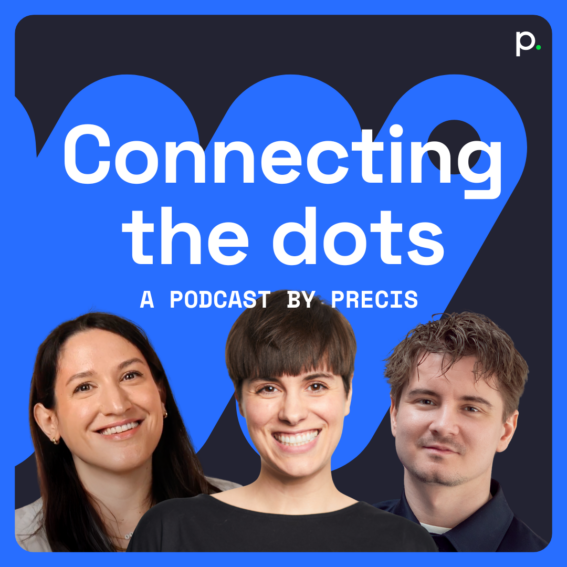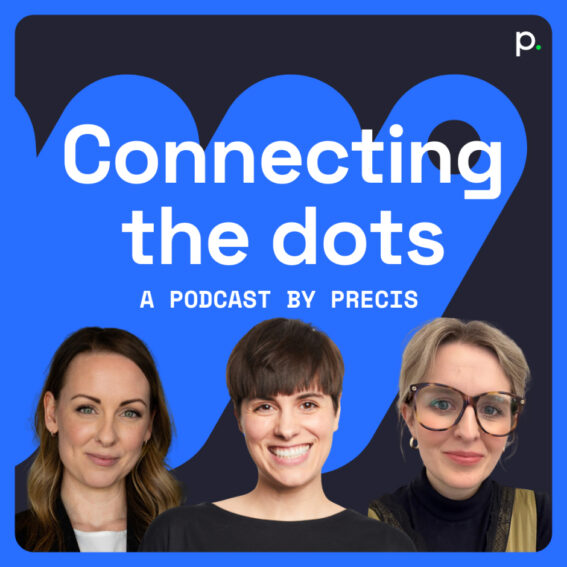How to diversify your paid media mix (without ditching what works)

Karolina Lapinaite
Head of MediaLet’s call it what it is: digital ad budgets have become overly concentrated. Year after year, we double down on the same familiar platforms – because they scale, they’ve worked, and they’re easy to justify. And yes, they still deliver. But the cracks are getting harder to ignore.
More than half of global ad spend now flows to just a handful of digital platforms. And as the digital economy continues to consolidate, marketers are placing bigger bets on fewer players.
That’s risky. The cost of staying visible is rising. CPMs are climbing, organic reach is shrinking, and algorithms change without warning. And brands that rely too heavily on a single platform (or even two) are putting their performance at risk. If that platform underperforms, if your audience moves, or if your costs spike overnight, your entire strategy suffers.
The answer to that headache isn’t just diversification for diversification’s sake. It’s a smart, deliberate media strategy grounded in your business goals. For some, that might mean expanding into new ad formats or placements within an existing platform. For others, it’s about building reach, awareness, or long-term brand positioning across new channels. Either way, diversification becomes the by-product of better planning, not a default move.
Where we are now
The shape of paid media is changing, yet many strategies haven’t caught up. A lot of brands are still optimising for single-channel journeys in a world where no one moves linearly through the ad landscape anymore.
Audiences flick between apps, tabs, and devices. They see a product on Instagram, search it on YouTube, read reviews on Reddit, and maybe – just maybe – convert after seeing it again in a podcast ad or newsletter. Your media plan needs to follow that fragmented path, not pretend it doesn’t exist.
Diversification is about knowing what each channel can do for you, and also what it can’t. Some platforms drive awareness. Some push conversions. Some are better for trust-building or testing creative. Knowing the role each channel plays lets you focus your budget where it makes the most impact.
That doesn’t mean being everywhere at once. Diversification is about understanding what each channel is capable of and how you choose to use it. Platforms like YouTube or Meta aren’t just performance or brand, but can do both, depending on your creative and targeting strategy. The same goes for formats like digital out-of-home or connected TV, which are becoming more precise and adaptable than ever.
What matters is clarity of intent. Know what you’re trying to achieve on each platform and design your investment around that. Awareness, conversions, trust, testing – it’s all on the table. But you get more value when you use each channel for what it’s good at, not just what it’s known for.
A strong paid media mix isn’t built overnight. It evolves. You test, you learn, you adapt. The best-performing brands treat diversification as an ongoing process, as something they tune over time, based on performance, audience behaviour, and business goals. Something that gives them options. That gives them control. And when the landscape shifts, they’re ready to pull a different lever instead of scrambling for a new playbook.
The new media reality: more inventory, more access, more disruption
Buying ad space on TV or in OOH is no longer reserved for big brands with big retainers. It’s faster, more flexible, and increasingly affordable.
Streaming platforms like Netflix and Disney+ are opening their inventory to advertisers, adding millions of new impressions to the digital landscape. At the same time, digital out-of-home (OOH) is evolving fast – traditional billboards, screens, and displays are being digitised and in many cases made available programmatically. These formats, once thought of as broad reach-only, are becoming more flexible and targeted than ever.
Meanwhile, the growing accessibility of programmatic buying is making media planning more fluid and dynamic, giving marketers greater flexibility in how, where, and when they activate campaigns across multiple platforms and formats. And AI (particularly conversational search models) is beginning to chip away at the dominance of Google. Users don’t always need to click through search results anymore; they can get answers straight from a chat interface. It pays to add Answer Engine Optimisation to your Search Engine Optimisation strategy.
Together, these forces are breaking down the walls of the typical players. And that creates space for smarter planning, wider reach, and more efficient performance – but only if you know how to navigate it.
6 principles in media diversification
1. Don’t put all your spend in one basket
Overreliance is a liability. If your media performance hinges on a single platform, you’re one algorithm change away from trouble. A diversified mix spreads that risk, so if one channel dips, your whole strategy doesn’t go with it.
2. Expand reach by showing up where your audience already is
Not where they might be. Where they are. That could mean Pinterest, Reddit, niche newsletters, or podcasts – especially for B2B. Diversification only works if it maps to real attention, not just channel variety for the sake of it.
3. Match message to mindset
Every platform has a different vibe. The way someone engages with a YouTube tutorial isn’t the same as how they browse Instagram Stories or skim a newsletter. Great media strategy is about making your creative fit the context it shows up in.
4. Build flexibility into your plan
Your media mix isn’t a one-time decision, it’s a living thing. Leave space for new channels, adjust pacing, shift spend when performance changes. Rigidity kills performance. Flexibility wins long term.
5. Test with intent
Don’t test just to say you tested. Start with a clear hypothesis. Know what you’re looking for and how long you’ll give it. Real testing creates clarity. Random testing just burns budget.
6. Measure total impact, not just last-click wins
A diversified mix works best when channels support each other. That means moving beyond last-click attribution and looking at contribution across the funnel. Not everything needs to convert to be valuable.
How to get started with media diversification
Media diversification looks different for every brand. So, the following ideas aren’t rules but instead starting points that can help you try out what works. The goal isn’t to do everything at once. It’s to test what fits, learn what works, and build from there.
For B2B
1. Start with Reddit Ads in niche subreddits. Choose one relevant to your ICP, write a simple text-based ad that speaks to a pain point, and link to a blog post, lead magnet, or landing page.
2. Try micro-influencer spotlights. Reach out to 2–3 small creators with an engaged, industry-relevant audience. Offer them free access to your product in exchange for a short review or walkthrough.
3. Sponsor a niche newsletter that speaks to your segment. It’s a low-risk, high-attention format for testing awareness.
For B2C
1. Run a TikTok or Pinterest vertical video test. You don’t need polished production, just authentic content that fits the platform.
2. Experiment with user-generated content. Partner with creators or loyal customers to build trust and social proof.
3. Explore retail media networks if you sell physical products. These platforms are growing fast and often fly under the radar
A couple of examples from our own work:
With Biltema, we spent 5 years building a strategy that combined consistent creative execution with long-term diversification across formats. Rather than jumping channels every quarter, the focus was on proving that sustained investment in both digital and traditional formats (like print) could create measurable impact over time, which validated the idea that diversification can support both brand building and performance when done intentionally.
And with Fjällräven, we helped launch a digital out-of-home (DOOH) campaign aimed at outdoor enthusiasts in urban environments. By activating digital billboards in high-traffic, relevant locations, we built top-of-funnel awareness while keeping the spend tactical and targeted. This kind of diversification didn’t require a huge shift in budget, just a smarter use of a format traditionally seen as purely reach-focused.
You don’t need to be everywhere. You just need to be where it counts and you need to give each new channel a clear role to play.
Your media mix should evolve as fast as your audience does
If your media plan still looks the same as it did last year, it’s probably working against you. Platforms shift, audiences move, and costs climb. What got results last quarter might already be outdated.
Diversification is a smart marketer’s long-term strategy. And like any good strategy, it needs regular check-ins. That means budgeting for testing, reviewing performance beyond platform-level attribution, and making space for what’s next – before your competitors do.
At Precis, we help brands turn this into a reliable structure. A smarter media mix, supported by clear testing frameworks, creative that adapts to each platform, and performance tracking that sees the full picture.
Because if you’re still betting everything on the same comfortable platforms, you’re not planning for growth. You’re playing catch-up in a game that’s already moved on.
Start small. Test smart. And build a media mix that can flex with whatever comes next.


